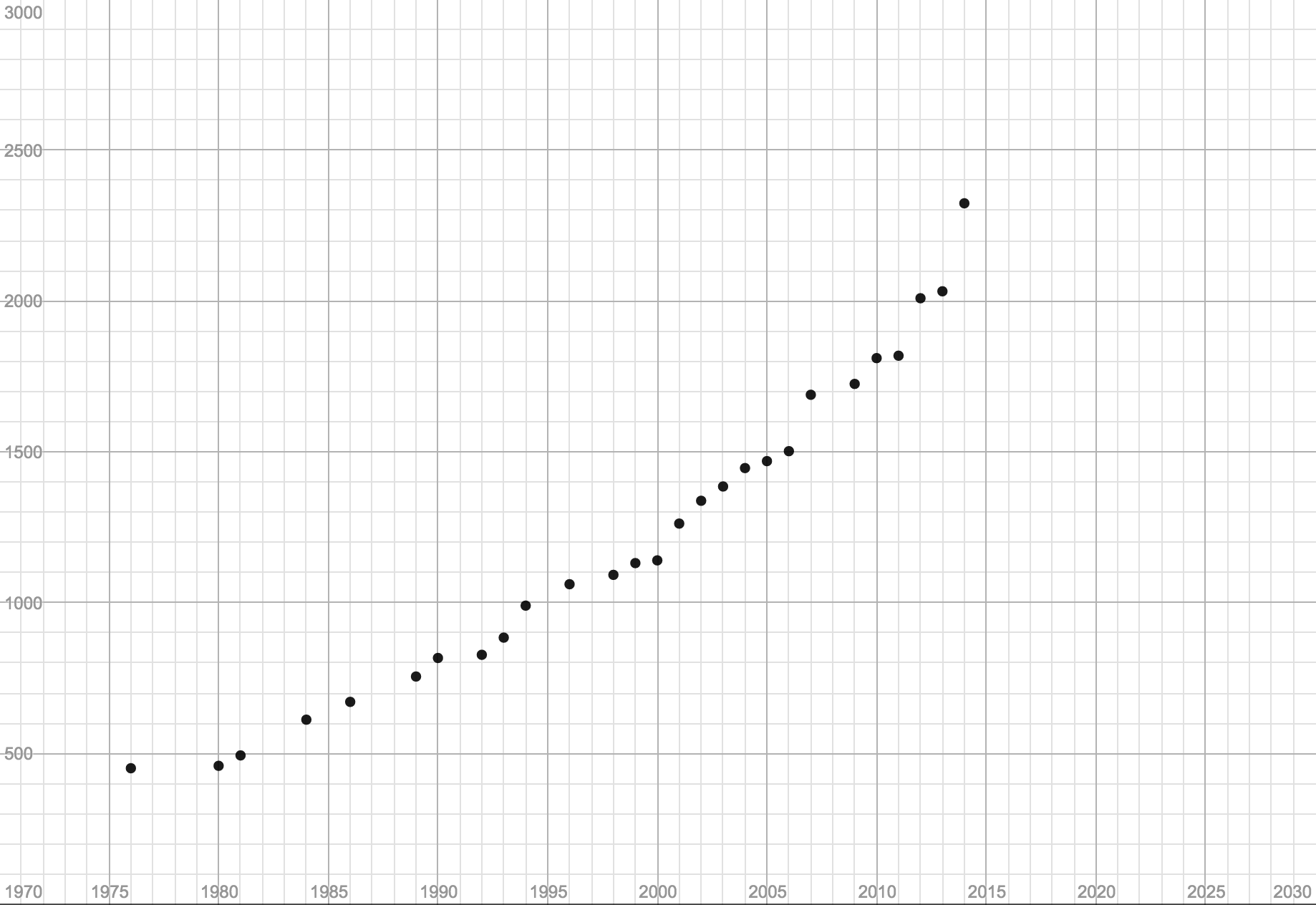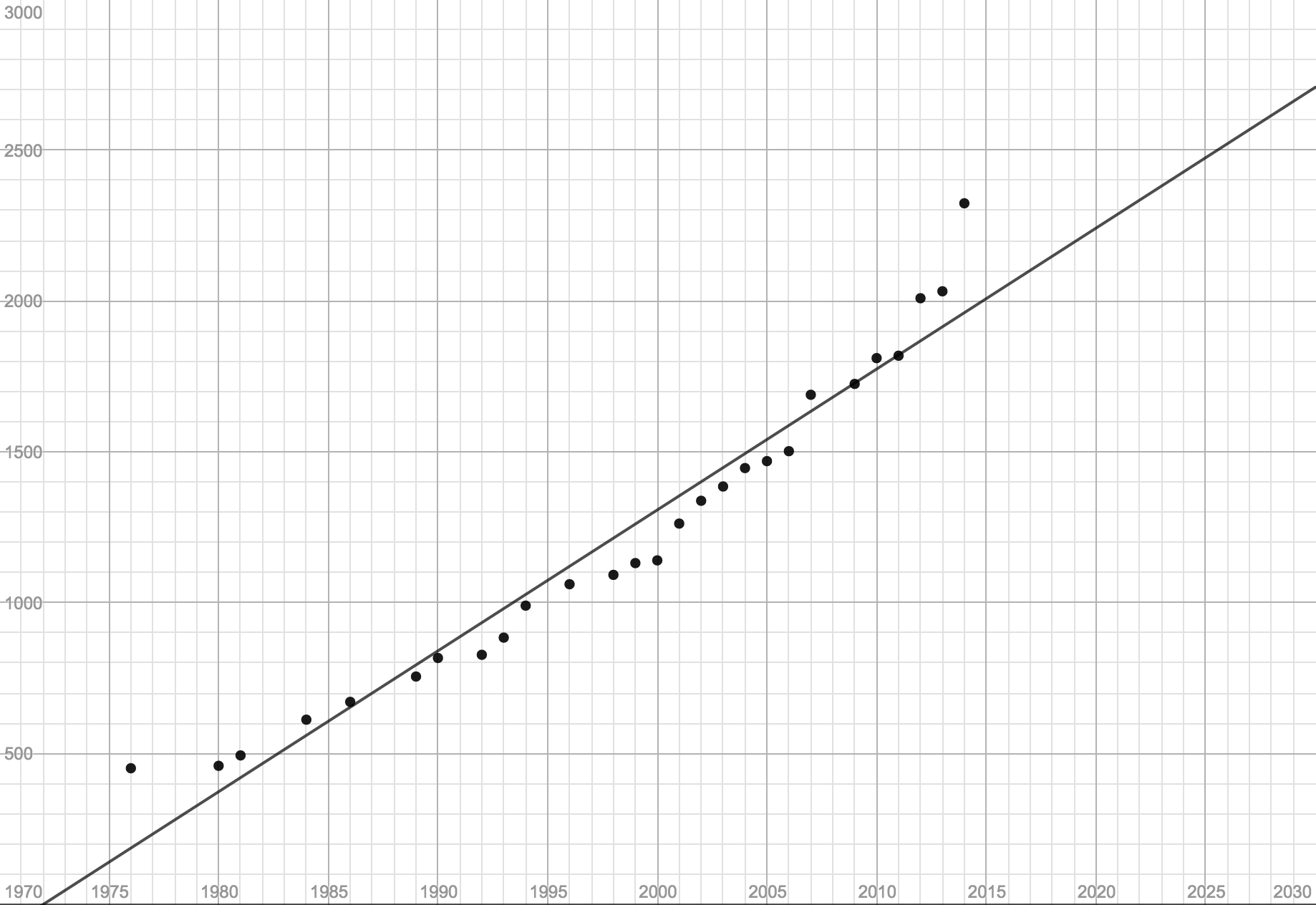Thanks to Doc Running who has organized a Halloween blog hop, you are in for a treat from several great math teachers! I've got a big story for you that I hope you'll share with students, and links to more great resources. Read on!
I always smile when I think about the scene in Big where giant Tom Hanks is coincidentally eating a tiny ear of corn. Partly I smile because it’s great comedy—he approaches the task with a seriousness reminiscent of Chaplin eating his shoe.
I always smile when I think about the scene in Big where giant Tom Hanks is coincidentally eating a tiny ear of corn. Partly I smile because it’s great comedy—he approaches the task with a seriousness reminiscent of Chaplin eating his shoe.
But I also like this scene because science! Corn (more precisely, maize) was domesticated
around 9000 years ago. Like all domesticated plants, maize has a wild ancestor, in this
case a Central American grass called teosinte. The seeds have hard shells and
look like rocks when dry to be camouflaged against the ground. They didn’t want
to be eaten!
But early farmers selected the
most edible and planted them, continuing the process until they created
miniature versions of our modern maize. Below are the ancient cobs that archeologists
found, measuring just 6 cm ( 2.4 inches). Was Tom Hanks eating a variety of domesticated maize from 4200 BC?
Well no, he was actually eating
baby corn—modern maize harvested tiny. But still, it’s amaizing
how big domesticated corn is compared to its wild ancestor! Impressed? Well then, consider the giant pumpkin. This record holder from 2014 weighed 2323 pounds!
Is this just a normal pumpkin
that’s been overfed, or is it some genetic freak? A little of both. The seeds
of a monster can sell for thousands of dollars as growers select the genes for
giants. But they also tend to these plants with a care usually reserved for
royalty—fertilizing, watering, removing pests and turning the pumpkin to avoid
cracking or rot over 4 months of growing. And these farmers are doing a great
job—nearly every year there has been a new record for heaviest pumpkin ever. In
1976, the record pumpkin weighed only 451 pounds.
In interviews, growers and
botanists agree that the records will continue to fall, with some speculating
that a 4000 pound pumpkin is close at hand. That’s about the weight of a Ford Taurus!
Does the math support this prediction? Let’s look at a graph. The x-axis
represents the year and the y-axis represents the weight of the world-record
pumpkin for that year.
Performing a linear regression is the
statistical process of finding the line of best fit for the data:
Wow, fits pretty well, doesn’t it? Hefty slope, right? And yet we can see that starting in 2007, the mass of the pumpkins has often increased at a faster rate than 46.7 pounds per year. Does this mean that a quadratic function would do better? Or how about an exponential function?
 |
| Quadratic |
 |
| Exponential |
Either way, pumpkins have come a long way from their humble, wild ancestral origins:
 |
| "Cucurbita texana 2" by John D. Byrd, Mississippi State University |
Now for a couple treats! First off, I made the above graphs using Desmos. I still like and use Geogebra, but I have to praise the uncluttered, intuitive structure of Desmos. Sliders and regressions which take a little work in Geogebra are quick, easy, and they look good right away in Desmos. And of course it's free and you store stuff in your account on their servers. Go try it! Secondly, if you like this post and want to
share this adventure with your kids, get the mission for Predicting the Great Pumpkin! Here's another fun one: my Halloween freebie, Candy Jar Estimate. Oh, and check out these other great treats from excellent math teachers!








Thank you!
ReplyDeleteLove this. What a great way to connect linear regression.
ReplyDeleteCheers,
DocRunning
Thanks Doc, I had a lot of fun with this one and I think the students will too!
DeleteThis is so cool! I love the progression of trying to model the data with various functions. I may recommend students look at this data when we complete our scatter plot project later in the year. Thanks for sharing!
ReplyDeleteThanks Amanda, I like that part of it too! The data, in addition to being well-organized in the mission that is for sale, is also at the Great Pumpkin Commonwealth, which is a real thing, amazingly. Here is their website: http://greatpumpkincommonwealth.com/index.php/gpc-champions/overall
DeleteThis is a great way to incorporate the fall season into a math lesson!
ReplyDeleteThanks, and Happy Autumn!
DeleteI teach at a core heavy school, with teachers (great teachers!) that are concerned with doing only activities that are aligned. Sometimes you just have to do fun stuff, and I love when you can mix both!! Great job!
ReplyDeleteYeah, absolutely! I think that if we are successful at generating curiosity and drawing students in, they end up with a deeper understanding of the content of the standards. It's tough to find the balance between allowing time and space for students to be curious and creative while battling to get through everything, so I empathize with teachers who struggle given the time, class size and prep time constraints. Hopefully we can get to a place where teachers are provided more of the conditions which allow this kind of exploration. Thanks for the comment!
Delete